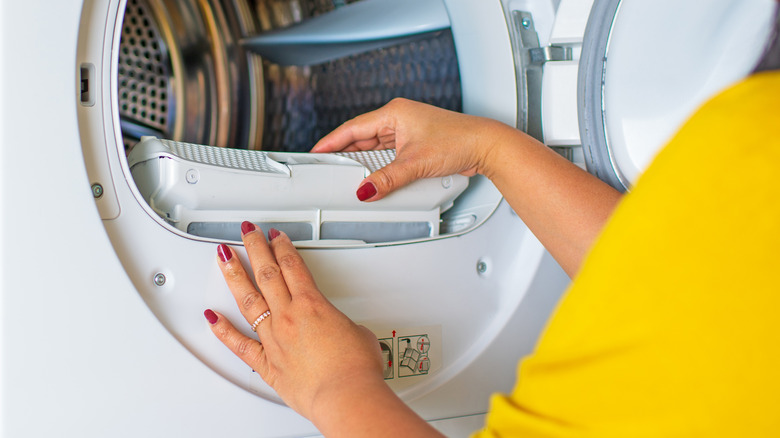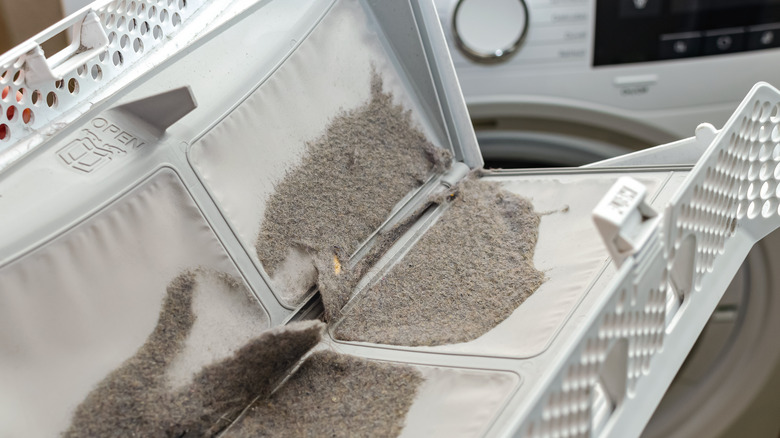The TikTok Hack To Deep Clean Your Lint Catcher
TikTok isn't just for Gen Z anymore. According to Parade, the app is filled with helpful cleaning hacks that will make tidying your house a breeze. TikTok is filled with content creators who share valuable tips on cleaning spaces quickly and efficiently — like the 20/10 cleaning rule — which saves followers from getting overwhelmed on chore day. Followers have learned how to clean tile floor grout, keep bathtubs, sinks, and showers spotless, and even fold sheets in a neat-and-tidy configuration, which definitely comes in handy when organizing the linen closet.
But what about the laundry room? If you're anything like us, chipping away at the laundry pile can feel like a never-ending task, and the lint catcher always seems to be filled. There are several important reasons to clean the lint trap after every use, including avoiding house fires, maintaining proper humidity levels, and keeping adequate airflow so that your machine works correctly. If you're wondering how to give your lint catcher a deep clean, there's a brilliant TikTok tip for that. Keep reading!
Don't forget the dirty lint catcher
So now that you know the importance of keeping your lint catcher lint-free after every load, let's take a look at this ingenious hack. TikTok user @jessicahaizman says that you must give this tip a try because it sometimes isn't enough to remove the lint from the lint trap. Sometimes it needs a heavy, deep clean. The TikToker told her 1.2 million followers, "We empty the lint out every single day but realized it was getting backed up. So I grabbed the screwdriver, took out this plastic piece, and tackled it deeper."
To thoroughly clean it, she used a narrow vacuum attachment tool to get every last bit of lint. Commenters were amazed, too, with one finding a little more than extra lint. "I just did this yesterday for the first time. I found two credit card size things and a green Starbucks stick." While you still need to remove your lint after each load, Apartment Therapy agrees that this is an excellent way to draw out excess debris and lint buildup.

